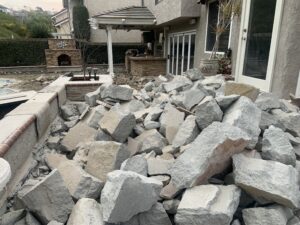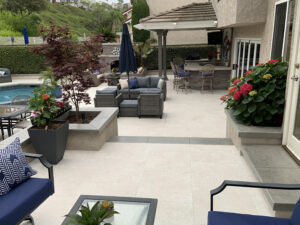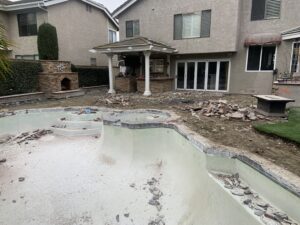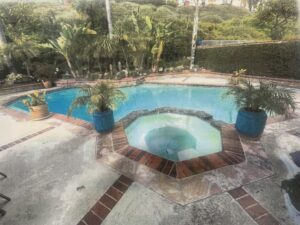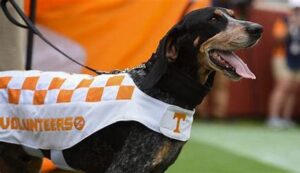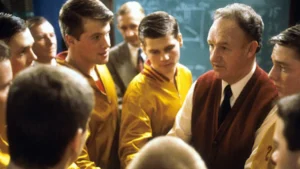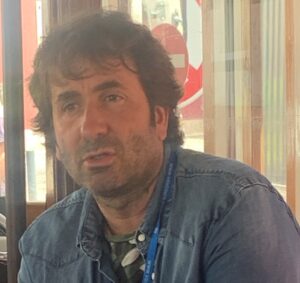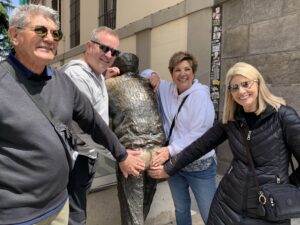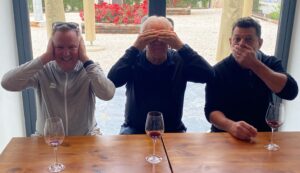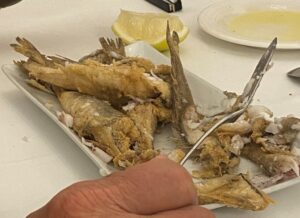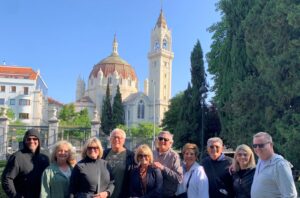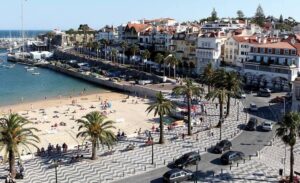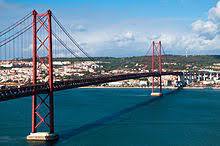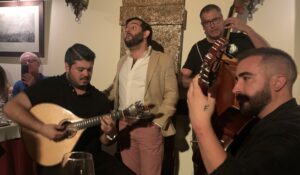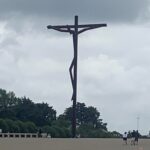by Bob Sparrow
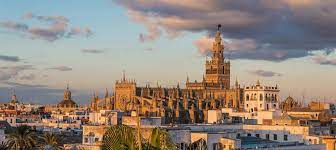
Seville Cathedral
Today we head to Seville, but before we get into the ‘cultural center’ of Spain, we stop at an olive oil farm, which produces not the most, but some of the best, olive oil in Spain. An on-site guide walked us through their olive orchard, as well as their ‘press room’ and gave us the history of the olive farm as well as the process for producing different kinds of olive oil. At the end of the tour, we go to the tasting room where we sample some of their latest harvests and were able to buy some – can’t wait to try it at home.
It’s back on the bus as we head into Seville, the fourth largest city in Spain. We check into our hotel, another ‘H10’, which I had not heard of before, but we stayed in several of them on this trip and I’d highly recommend them, especially the rooftop bars! We visit the Seville Cathedral, which is the largest Gothic cathedral in the world, it took over 100 years to build; it is huge and awesome!!!
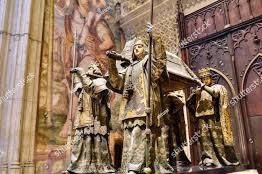
Columbus tomb in Seville Cathedral
There’s some controversy about where his final resting place is, but the Spaniards claim that the tomb of Christopher Columbus is here in the Seville Cathedral – it is quite a display. There is no controversy as to the fact that Columbus left from Seville on his famous exploration of the New World. But, you say, “Seville is 30 miles from the ocean, how can that be?!” Yes, it is, but it is connected to the ocean by the Guadalquivir River, which is deep and wide enough to handle the largest of Spanish galleons. In fact, this in-land port was preferred by sailors as it was a great protection against pirates. A pirate would have to come 30 miles up the river to steal anything and then would have to go back the only way out, which was heavily fortified and in fact blockades could be set up to keep a ship from getting to the ocean. So, Seville became a very popular and profitable port. Some of us made the 40-story hike to the top of the church tower, which provided a panoramic view of the entire city as well as a test of the lungs and legs.
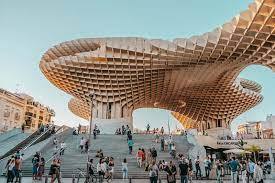
Mirador Setas
We next visited Mirador Setas, a huge wooden structure in the middle of the city square, built in 2005. We were able to walk on it and get some spectacular views of the city, it is quite an interesting structure. There is a small theater at the bottom of the structure where we watched an amazing video of Spain – very reminiscent of the Disney ride, ‘Soaring Over California’ video where one is ‘flying’ over the city and into several of the historic structures – awesome!!
I don’t recall the name of the restaurant where we had dinner (some Spanish name I think!!), but the meal was possibly the best dinner I’ve ever had – the main dish was salmon, but I was so full with all the delicious tapas that came before it, that I could barely finish it – it was all so delicious, including the wine!
We next have a local guide give us a city tour and then we get do a carriage ride through another part of the city, that took us to Plaza de Espana, Maria Luisa Park and many other sites of interest – beautiful. Excellent weather the entire time helped make everything that much better. Prior to dinner we have a flamenco lesson, which was given by a local teacher and showed most of us that we are not even close to being coordinated enough to do this dance. Our dancing looked more like flamingos than flamenco! We then go to a theater and see a flamenco show, complete with guitar player, a singer and a male and female dancer. For me, the dancing was awesome, as was the guitar playing, but the singing left a little to be desired. It was more whaling than signing. When the female singer started, Linda turned to me and said, “Someone should fall 911, this person sounds ill”, but others seemed to like it.
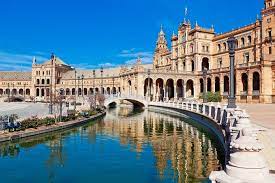
Plaza de Espana
For dinner, we were free to go anywhere in the city. Before I tell you where we went, I need to tell you what our tour guide, Daniel said about being a visitor to a foreign country. “Know the difference between being a tourist and being a traveler? We made a few guesses, but he finally told us, “A tourist tries to make the country adapt to him or her, a traveler tries to adapt to the country.” So, mostly we tried to be ‘travelers’, but after a week of foreign food, we saw a place that had a sign that said, ‘Hamburgers – different, but delicious’; that’s where we had dinner – it was a little different, but delicious!
Next time we leave Spain and head to Portugal . . .
